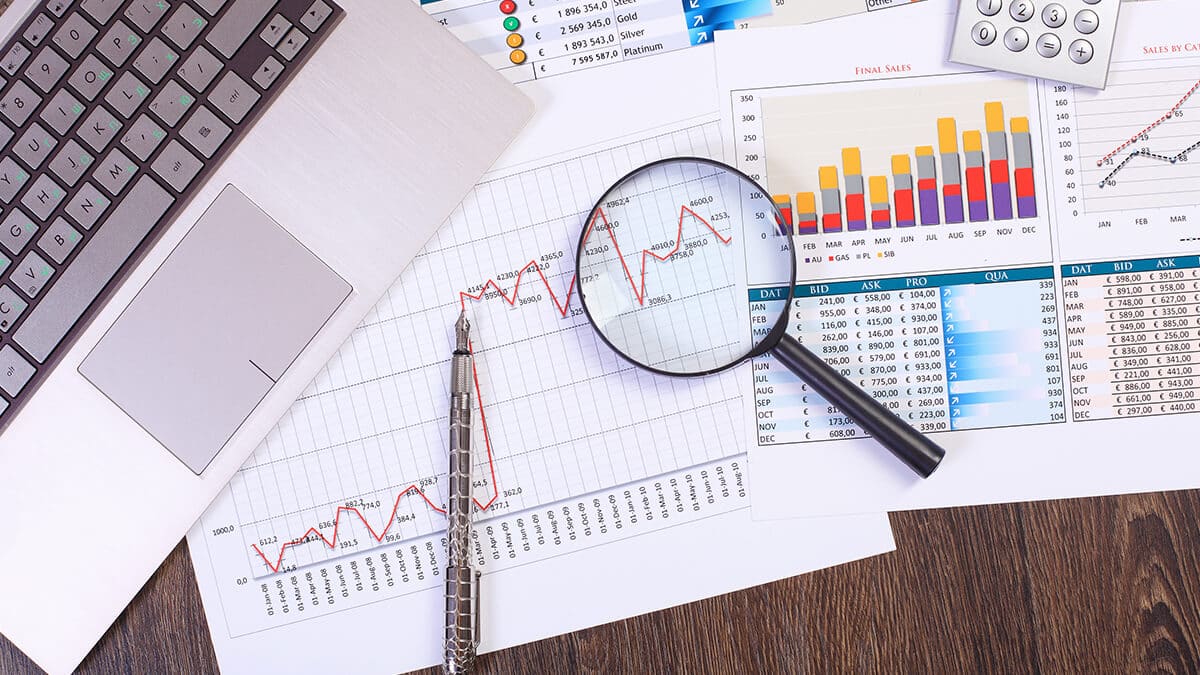In this guide
- How does my super fund invest?
- What are unlisted assets?
- Listed and unlisted investments: What’s the difference?
- What are the benefits of unlisted assets?
- Why do super funds use both listed and unlisted assets?
- Unlisted investments and super funds: Good or bad investments?
- How are unlisted assets valued?
- How valuations affect your super account
Unlisted assets don’t sound like a topic that would cause people to get all hot under the collar, but that’s exactly what’s happening in the super industry right now.
After a difficult year in investment markets due to rising inflation and interest rates – plus concerns about the end of quantitative easing in the US and elsewhere – the annual returns posted by super funds were keenly anticipated.
But with several large industry super funds posting positive returns courtesy of strong performances from their unlisted assets, some observers are calling foul, claiming this paints an unfairly positive picture of their investment performance over the past financial year.
Although the industry debate continues to rage, for an ordinary super fund member it raises the question of just what unlisted assets are and why your super fund could have some of your retirement savings invested in these assets.
How does my super fund invest?
To help members successfully save for their retirement, super funds create a broad investment portfolio that includes a wide variety of assets and asset classes (such as shares, property, bonds and cash).
The fund’s trustees use these different assets to ensure the fund has a well-balanced and diversified investment portfolio. This approach generally includes using both listed and unlisted assets.
What are unlisted assets?
Most super fund members are familiar with listed assets like shares (which are listed on public exchanges like the Australian Securities Exchange), but are less familiar with unlisted assets.
An unlisted asset is an investment not listed on a securities exchange and not traded daily like shares. Unlisted assets can be accessed either directly, or by buying ‘units’ in an investment fund that holds the underlying asset.
As unlisted assets are considered long-term investments, they are seen by financial experts as a useful tool for achieving a super fund’s main objective of assisting its members to save for their retirement over their entire working life. They are widely used by large international investors (such as sovereign wealth funds and university endowment funds), that are responsible for managing huge investment portfolios designed to be run over very long time periods.
Unlisted assets are available within several asset sectors. These include property (such as large office buildings and shopping centres), infrastructure (toll roads, ports, airports, power grids and pipelines), private equity (investments in start-ups or existing companies), and private or corporate debt.
Large super funds investing in unlisted assets usually pool their money with other large investors and share ownership of the underlying asset. This consortium approach allows better diversification within a super fund’s investment portfolio and reduces the risks associated with such sizeable, single investments. Super funds have taken this route when investing in significant unlisted assets such as our capital city airports (Brisbane, Sydney and Melbourne), NSW Ports and toll roads in Sydney and Brisbane.
Listed and unlisted investments: What’s the difference?
Both listed and unlisted assets give investors the opportunity to own an investment asset and potentially earn an investment return.
Listed and unlisted assets are often based on the same ‘family’ of assets (such as property or infrastructure), but whether the asset is listed or unlisted can make a big difference in how it performs as an investment. This is one of the reasons super funds use both in their investment portfolio.
| Listed assets | Unlisted assets |
|---|---|
| Priced daily in the sharemarket as the asset is bought or sold | Pricing estimated quarterly, six-monthly or annually by independent professional valuers |
| Pricing can be affected by both the outlook for the particular business (shares) or asset, plus the general sentiment towards that investment market | Pricing based on estimated value of the asset and recent sales of similar assets |
| Prices tend to go up and down more often | Valuations tend to be more stable |
| More liquid, so easy and quick to buy or sell | Less liquid |
| Higher returns are achieved by taking higher risks, resulting in a lower risk-adjusted return | Good returns adjusted for the generally lower level of risk taken |
| Dividends and income streams tend to be more volatile | Generate steady, secure income streams |
What are the benefits of unlisted assets?
Unlisted assets provide different benefits and investment returns to listed assets. For super funds, they complement their investments in listed assets and help smooth out the fund’s overall investment performance.
Unlisted assets also help to reduce your fund’s investment risk by spreading its money across a range of assets and different investment structures.
Some of the main benefits unlisted investments offer a super fund include:
- Diversification – Investing in both listed and unlisted assets spreads investment risk and helps reduce the chance of low or negative investment returns to fund members.
- Steadier income stream – Unlisted property and infrastructure assets tend to provide regular, steady income streams from sources like commercial rents and road tolls.
- Good risk-adjusted returns – Compared with many other asset classes, unlisted assets usually achieve good returns considering the level of risk taken to achieve those returns.
Why do super funds use both listed and unlisted assets?
A large super fund’s investment strategy is usually built around the goal of creating a strong and stable stream of investment returns over time.
For a strong investment performance, funds usually invest in listed growth assets like shares. Unfortunately, their investment returns tend to be volatile.
For the stable part of their investment returns, some funds choose to invest in unlisted assets as they tend to provide a steadier flow of investment returns.
The objective of this split approach is to smooth out ups and down in the investment returns a super fund credits to its members’ super accounts over time.
The different characteristics of investment returns from the main asset sectors (listed and unlisted) can be seen in this table of returns over recent years. As you can see, average returns from unlisted assets have been positive and relatively stable over short and longer time spans:
Asset sector return performance (results to 30 June 2022)
| Asset sector* | 1 year % | 3 years % pa | 5 years % pa | 10 years % pa |
|---|---|---|---|---|
| Australian shares | -6.8 | 3.4 | 6.9 | 9.2 |
| International shares (hedged) | -12.4 | 7.4 | 7.8 | 10.1 |
| International shares (unhedged) | -8.1 | 7.0 | 7.8 | 10.1 |
| Private equity | 24.2 | 19.0 | 16.7 | 14.1 |
| Australian listed property | -11.2 | -1.9 | 5.0 | 9.5 |
| Global listed property | -10.5 | -1.4 | 1.9 | 6.6 |
| Unlisted property | 14.1 | 8.3 | 9.2 | 10.1 |
| Global listed property (hedged) | 7.6 | 3.7 | 6.0 | 10.3 |
| Unlisted infrastructure | 12.7 | 8.0 | 10.4 | 11.3 |
| Australian bonds | -10.5 | -2.6 | 0.9 | 2.6 |
| International bonds (hedged) | -9.3 | -1.6 | 0.8 | 3.1 |
| Cash | 0.1 | 0.3 | 0.9 | 1.7 |
Source: Data from Chant West, August 2022
*Market indices used for asset sectors other than private equity, unlisted property and unlisted infrastructure. Chant West used the average returns of a small group of super funds to calculate these returns, which are shown net of fees, while no fees are taken out for the other asset sectors.
Unlisted investments and super funds: Good or bad investments?
Although some large super funds have invested in unlisted assets for many years, the strategy is not without its critics. During 2022, the use of unlisted assets has been debated within the super industry as the strong returns from unlisted assets (see table) helped some industry super funds turn in better performance results than retail super funds who choose not to invest in unlisted assets.
The debate has centred around whether or not the strong returns provide an accurate representation of the performance of some industry funds, given that valuations of their large unlisted assets are not undertaken daily in the same way as listed assets like shares. Some critics argue this lag in valuations gave industry funds an unfair advantage.
It’s worth noting, however, in early 2020 a number of industry funds revalued their unlisted assets outside their normal valuation timetable to better reflect downward trends occurring in investment markets at that time.
A similar valuation debate occurred in the wake of the GFC, which also saw many industry funds perform well thanks to their unlisted investments. At that time there were concerns about infrequent valuations of large unlisted investments and the difficulties involved in selling them quickly if a super fund needed to recoup its money rapidly.
Another criticism of unlisted assets is a concern some fund members could ‘game’ or take advantage of the lag in revaluing unlisted assets, by switching between investment options before their fund’s unit prices accurately reflected lower asset valuations due to investment market declines.
How are unlisted assets valued?
Listed assets are priced daily on markets like the ASX using the price of the last sale transaction.
Because big unlisted assets are not bought and sold every day, their pricing is more irregular. Most super funds revalue their biggest unlisted assets every quarter, while less significant unlisted assets might only be valued six-monthly or annually.
Unlisted investments are valued using an estimate of the current ‘fair value’ of the asset. Regular revaluations ensure the assets reflect their likely current value in both the fund’s financial reports and the investment returns credited to your super account. Without regular revaluations, super funds could be listing assets in their financial reports at inflated or lower values than they are actually worth.
The actual valuation of unlisted assets is undertaken by professional valuers who are external to the super fund and are usually rotated from a panel of independent valuers every three years. The valuer uses best practice guidelines set by bodies such as the Australian Property Institute and International Private Equity and Venture Capital Valuation Board to determine the current value of the asset.
The proposed valuation is then cross-checked by the valuer against recent sale transactions for similar assets and they also take into account current market conditions.
Super funds are required to follow processes outlined by APRA and the Australian Accounting Standards when developing current valuations for the investment assets they own. APRA also keeps a close eye on the revaluation practices used by super funds.
How valuations affect your super account
Unlisted assets are a well-accepted part of the investment portfolios held by large, long-term investors, both here and overseas.
Your super fund is required to undertake regular valuations of these assets to ensure you are receiving an appropriate return from the investment option you selected for your retirement savings.
When a new valuation for an unlisted asset is received by your super fund, it is immediately reflected in the fund’s daily crediting rate for any investment options affected by the change. This alteration to the daily value of the investment option is done to maintain equity among fund members.






Leave a comment
You must be a SuperGuide member and logged in to add a comment or question.